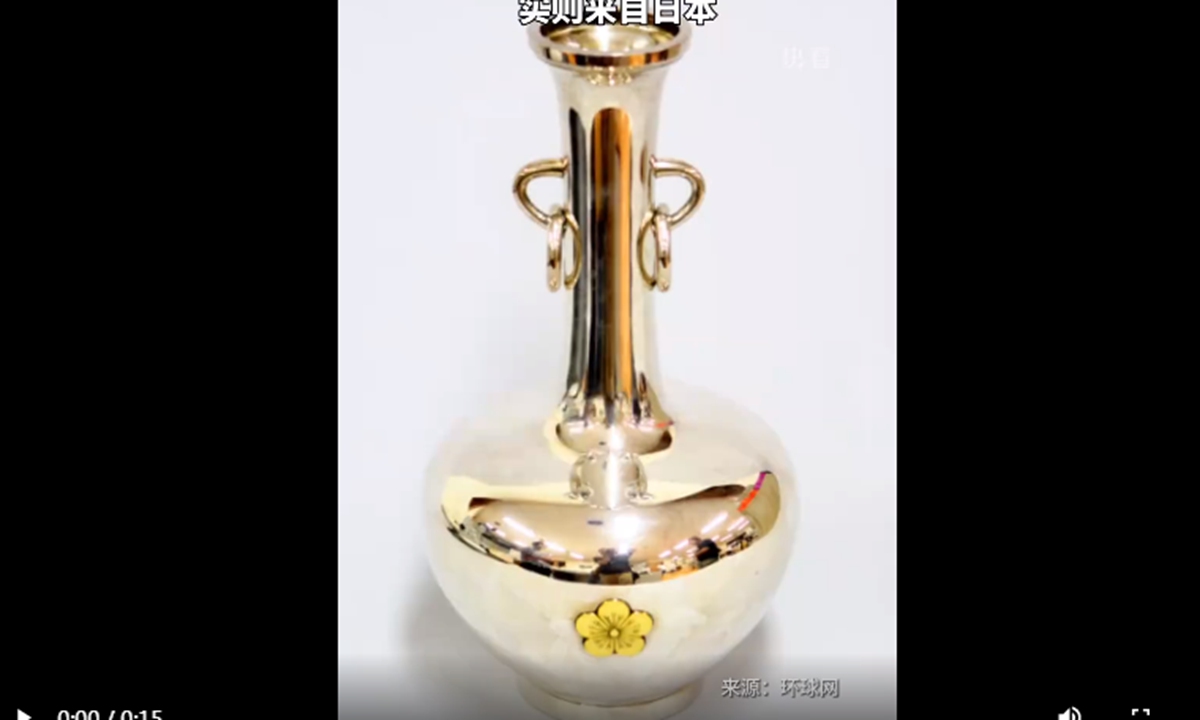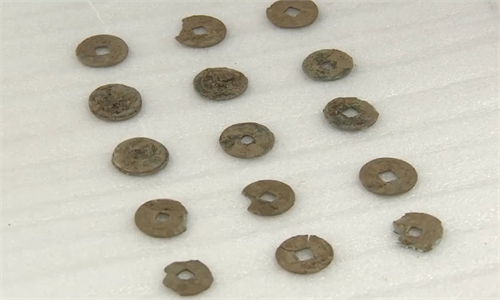ARTS / CULTURE & LEISURE
Sharing experience could have prevented S.Korea's relic verification error

Photo: screenshot of the video posted on Sina Weibo
According to South Korean media reports, the country's application for a "silver vase with pear flower design" to be recognized as a cultural relic was canceled as it turned out that the vase was actually made in Japan.
This news stirred up heated discussions on social media platforms. Some netizens questioned: "Why didn't the staff examine it carefully before the application?" and "How come they were so negligent in authenticating it?"
Indeed, this incident shows that relevant South Korean authorities lack professional expertise when it comes to verifying the country's cultural heritage.
In ancient times, the pear blossom was the symbol of the Joseon Dynasty of Korea (1392-1910). When the vase was first discovered, South Korean experts believed that it was made in the official workshop of the former royal family in 1910. In 2009, it was recognized by the Cultural Heritage Administration of Korea (CHAK) as a cultural heritage item.
Later, some researchers found the Chinese characters "pure silver" and "kobayashi" on the bottom of the vase, which they thought must be a mark of the producer. Further investigation found that the vase was designed and made by the famous arts and crafts store Kobayashi Watch Shop in Tokyo, Japan. However, the South Korean experts had thoroughly inspected the vase, looking for damage and examining its craftsmanship and design before it was classified as a cultural heritage.
A similar lack of professionalism in cultural heritage protection can also be seen in another recent incident.
On January 30, the CHAK began an investigation into damage done to the local "dolmen" historical site in Gimhae, South Gyeongsang Province.
According to South Korean news outlet KBS, the dolmen, a type of tomb covered with heavy stones, dates back to the Bronze Age. Measuring 10 meters long and weighing 400 tons, it was "the world's largest dolmen," even larger than the Carnac stones in France. However, during renovation, which was carried out without the supervision of archaeologists, workers used equipment like high pressure washers and scrub-brushes to clean the stones, resulting in a serious damage to the tomb.
Many South Korean netizens burst into tears after hearing the tragic news. "Are they crazy?" and "Those unqualified staff members should be fired" are some of the posts seen on Korean social media platforms.
When it comes to historical relic preservation, South Korea could learn a thing or two from the experiences of other countries.
China is experienced in this regard and is open to offering its assistance, as it did to help Nepal, another neighboring country, to renovate a local ancient pagoda.
In China, restorers are required to have official qualification certificates and follow the principle of repairing relics without changing their original state. For instance, Chinese archaeologists have won worldwide recognition and acclaim for their stringent and professional approach to restoring the Sanxingdui Ruins.
Only by ensuring professional expertise and sharing experience can countries better protect their cultural heritage.

